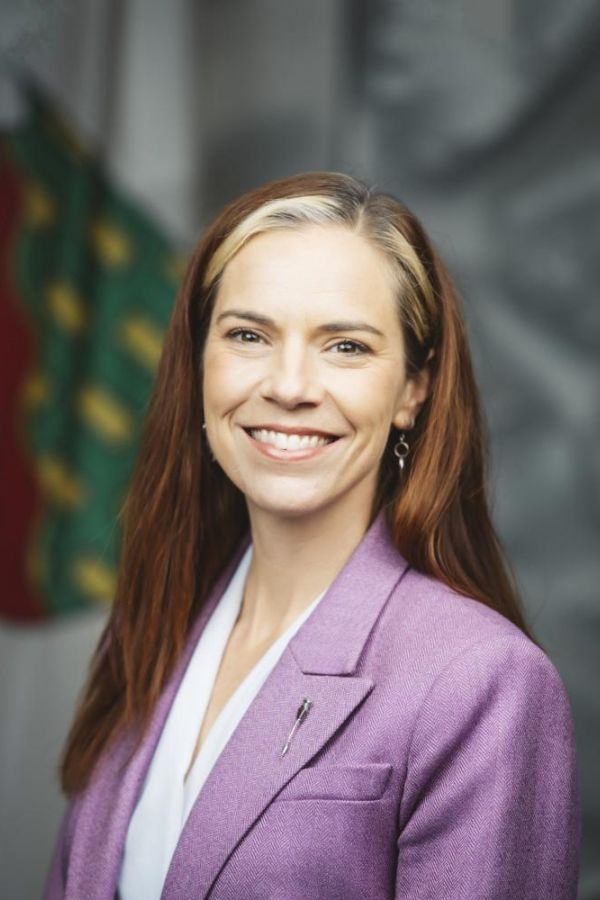Debates of May 26, 2020 (day 21)
Return to Written Question 6-19(2): Educational Facilities
Mr. Speaker, I have a Return to Written Question asked by Member for Tu Nedhe-Wiilideh on March 3, 2020, regarding education facilities.
There are two tools commonly used by the Departments of Education, Culture and Employment (ECE) and Infrastructure (INF) to assess the degree to which a physical structure supports actual use and/or functional alignment where function means activities programs, services teaching methods, et cetera.
These two tools are:
functional assessments or audits; and
post-occupancy evaluations
When new schools are built, a "functional program" is produced. A functional program describes, in relatively high-level technical language, what a physical structure needs to include to support a list of identified functions. Examples of functions in schools include:
teaching and learning, including contemporary pedagogical practice;
learning support;
recreation;
administration;
counselling and/or mental health services; and
medical treatment
ECE and INF can take this approach and, where requested or required, produce a report that looks at the functions currently being delivered at an existing school and compare that with the type and quantity of space available to support those functions. The report would identify how well an existing building supports the various functions.
Post-occupancy evaluations are geared to actual use. After a major project is complete and some time has passed, ECE and INF will conduct a post-occupancy evaluation of the building. This report looks at how well the new space is supporting actual daily use by occupants. A post-occupancy report was recently completed on the East Three School in Inuvik. The other objective of this report is to assess whether the design elements developed during the project and reflected in the building were appropriate; a lessons-learned section to inform future projects.
The departments have a third tool that assesses school space called a technical status evaluation (TSE) which exclusively examines the physical and technical condition of the building and does not consider program suitability. TSEs are not discussed further in this response.
ECE has not conducted an audit of the existing learning space at Kalemi Dene School. ECE does not regularly conduct functional audits of existing schools. ECE would consider performing a functional audit, in partnership with INF, if a divisional education council (DEC) or district education authority (DEA) identified a serious functional issue with the existing space.
When ECE discusses the design of physical spaces and their capacity to support contemporary pedagogical practice, it is important to consider that how well spaces support practice is a spectrum. Most physical spaces, including older schools in the Northwest Territories (NWT) can, to a greater or lesser degree, facilitate contemporary teaching and learning practices. Major renovations or rebuilds are opportunities to increase the degree of alignment between space and practice. For example, newer schools make greater use of breakout space to facilitate group work. All schools can use existing spaces to do group work, however newer schools with purpose-built breakout areas can facilitate group work better. Another example is storage space for outdoor equipment. Older schools can find storage for outdoor equipment to support outdoor learning activities or programs, but newer schools might have a purpose-built space, the new Ecole J.H. Sissons School design has dedicated space for this purpose.
If there are minor misalignments, ECE considers funding smaller, more focused renovations via its annual capital allocation, though these must be balanced by needs that are assessed as a higher priority such as safety issues, human rights issues, or changes required by regulations, among others.
With respect to Kalemi Dene, the school was built in 2009, making it one of the youngest and most modern facilities in the NWT. The existing space is capable of supporting current educational priorities and teaching methods. To ECE's knowledge, the community values and supports Kalemi Dene School, including its design.
ECE is not in a position to speak for the community government of Ndilo or the Yellowknives Dene First Nation on the issue of whether the existing learning space meets the community's view of educational priorities. ECE believes that Kalemi Dene is fully capable of supporting the delivery of the core educational program to students of the school.
The ability to tailor the delivery (the form), and some content, of the core educational program to account for local concerns is one of the primary functions of DEAs. ECE relies on DECs and DEAs to work with their schools to ensure the education program reflects the needs and wants of the community, within the bounds of available resources.
ECE is aware of use restrictions being experienced due to high enrolments and lack of free space. These issues are generally addressed in the department's Capital Needs Assessment during corporate capital planning, however, there is no guarantee funding will commence in any particular fiscal year.
ECE has not produced, nor does it possess, detailed project planning documents including architectural drawings, scopes of work, project descriptions, or technical reports for future expansions of a classroom addition or gymnasium at Kalemi Dene in Ndilo. ECE had a brief description of the scope of the project in its 2020-2021, 20-Year Capital Needs Assessment and this project was considered, but ultimately not selected, during the most recent capital planning process. ECE is aware of the general scope of the project but until planning study funds are allocated as part of corporate capital planning, ECE cannot retain the required design support to produce detailed documents or plans.
ECE is aware that the Yellowknives Dene First Nation has been looking at this project. A January 21, 2019 letter to the Minister of Education, Culture and Employment identifies a motion and work being undertaken with the Department of Municipal and Community Affairs. If there are detailed plans produced by the Yellowknives Dene First Nation, ECE is not currently in possession of them.
As background, projects like an addition to Kalemi Dene would not have detailed planning documents produced until after a project has been approved and funding allocated to a planning study.
ECE is not in a position to expand the minority language education rights established in section 23 of the Canadian Charter of Rights and Freedoms (Charter) beyond the Francophone community in the NWT. Implementing such a model on a territorial-wide basis would be exceptionally costly, complex, and it is unclear if it would improve educational outcomes. There are several possible unintended consequences of implementing such a model.
The Charter-protected language rights model would require a physically separate school building for each individual language. Operations are conducted exclusively in that language requiring all students, staff, teachers, and administrators be sufficiently fluent to function in the target language, including day-to-day conversation, documentation ranging from routine letters to parents and classroom materials, textbooks, worksheets and homework. Every school would be overseen by a DEA separate from all other languages and expected to operate exclusively in the target language, in both verbal and written forms.
This would require multiple schools in a single community where the number of minority language speakers warrant, however 'where the numbers warrant' is not expressly defined. For a community like Yellowknife, there could be between seven and 11 separate JK-12 schools. For Inuvik, there could be at least three, maybe five, separate JK-12 schools. Each community would need to be regularly assessed to determine if a new separate school for an un-served language was needed.
The infrastructure costs associated with building multiple separate schools, and operation and maintenance costs for running them, for each linguistic minority community in every municipality would be significant. There are many other impediments to implementing the Charter protected language rights model to the NWT education system:
Creating separate schools fractures the student population into smaller, but more numerous, groups. This results in many small schools with fewer resources to offer more and different programs than larger schools;
The system itself gets more complex because each linguistic community needs its own education authority. This results in the complexity of authorities needing to interact with each other as students enter, leave, and transfer between them, more reporting requirements, more trustee elections, and so on;
The need for all members of school administration, teachers, and staff to speak the minority language presents substantial staffing issues. More fluent teachers would be needed to implement such a system. The NWT is reliant on teachers trained in the rest of Canada who will not have the language skills needed for such a system; and
It is unclear if all minority languages are in a state where they can deliver the full curriculum. Translating the full JK-12 curriculum into all nine Indigenous languages would prove a tremendous challenge.
One of ECE's objectives is to promote Indigenous language revitalization. The department recognizes that schools have a role to play which is why the Indigenous Languages and Education Policy, and its associated financial resources, was developed and implemented in 2018.
The policy provides dedicated Indigenous language resources for schools, including designated language positions. This policy replaces the previous Ministerial Directive on Aboriginal Language and Culture-Based Education.
Beyond the education system, the Indigenous Languages and Education Secretariat supports Indigenous governments as they design and deliver revitalization programs for their languages. The department's position, and one that is consistent with Truth and Reconciliation Call to Action 14, is that this work is best done by the language speakers themselves.
ECE is always open to observations and ideas on how well Indigenous language revitalization efforts are working, how to improve programs, and how the department can better support revitalization objectives. ECE will continue to engage with district education authorities, which are comprised of locally elected community members, to see how Indigenous languages can be supported in the school environment and how well existing programs are being received. ECE has, and is using, a monitoring and evaluation framework to measure the effectiveness of the new policy but since it is relatively new, more data will be required before it can be evaluated. Thank you, Mr. Speaker.








